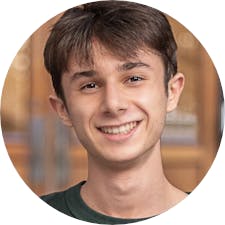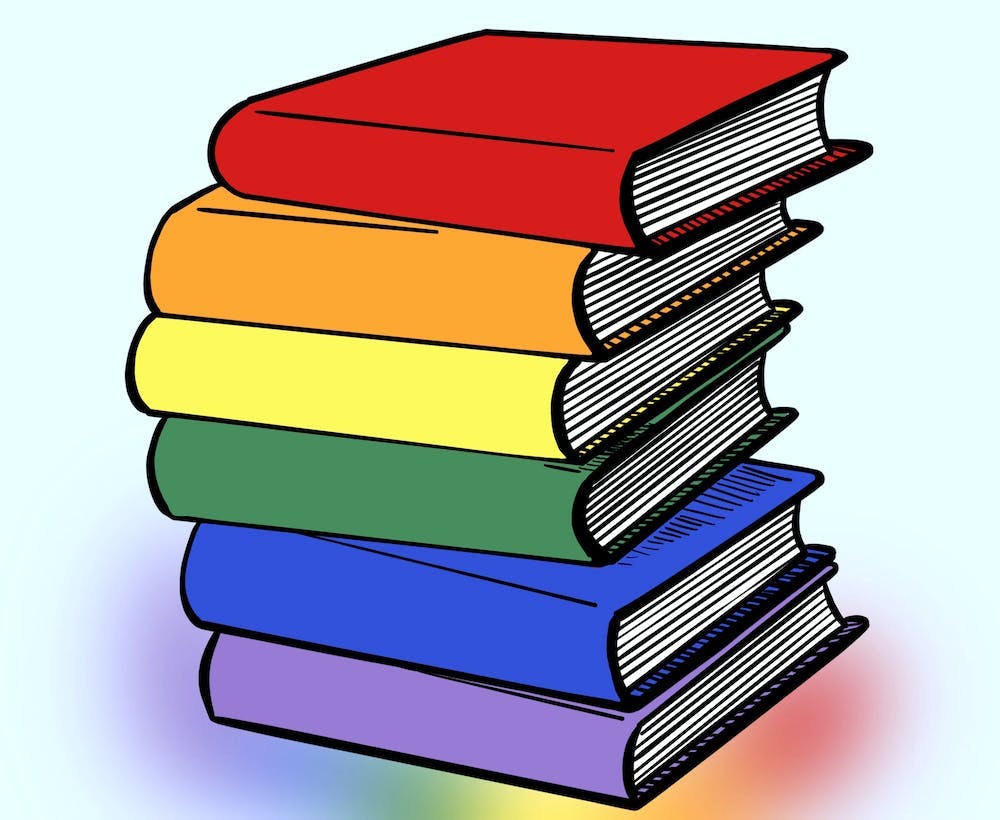While queer students at Brown have numerous options to engage their identity through extracurriculars — ranging from preprofessional and academic societies to artistic groups — Brown students can also explore queerness in a variety of academic disciplines, including a rapidly evolving field known as queer studies.
A look through The Herald’s archives offers a more recent history of queer studies on campus and a sense of what it’s like studying the discipline at Brown today.
2006-2007: The birth of Gender and Sexuality Studies
A Feb. 22, 2007 article in The Herald announced the creation of an Undergraduate Working Group for Queer Studies — with the hope of proving that “there is a demand” for classes focused on queer issues and bringing more academics to campus with a specialization in queer studies. The fall before, the gender studies and Sexuality and Society concentrations had received approval to merge into Gender and Sexuality Studies.
In a letter to The Herald published days later, advisers of the two concentrations assured that the program would “continue to advocate for hiring in gender and sexuality studies and to work with students to promote these fields of study.”
For several students, it was queer studies’ designation as a program — and not a full department — that contributed to the lack of offerings in the field. In an opinion published in April 2007 calling for more queer studies courses, Karla Bertrand ’09 wrote that the dismantled Sexuality and Society program had struggled in part due to “Brown’s hiring policies, which only allow full-fledged departments to hire faculty.”
According to Bertrand, “this restriction meant that the Sexuality and Society program … lacked the requisite number of researchers and educators to flourish.”
Professors Gretchen Schultz and Tamar Katz, who wrote the letter, also acknowledged the limitations posed by program status, a problem that the merger would not solve. But they affirmed that there was “high demand” for courses on queer topics.
Other Brown community members suggested otherwise. Bertrand wrote that part of Sexuality and Society’s demise stemmed from “student disinterest.” And James Green, then associate professor of history and adviser for GNSS, told The Herald in 2007 that interest in queer studies courses remained low and that only a few GNSS concentrators expressed interest in queer topics.
“This is a market-driven university,” he told a Herald reporter at the time. “Students vote with their feet on the classes.”
Michael DeLucia ’07, the undergraduate working group’s founder, told Bertrand for her opinion piece that “the new combined (GNSS) concentration desperately needs student support to make it clear that students want these courses to stick around.”
But DeLucia also did not doubt that the student interest in queer studies courses existed — it was simply a matter of rallying support.
“We sort of have a hunch that there are queer students on this campus who want there to be more LGBT-related classes,” he told The Herald in 2007.
Queer studies on campus, from 2007 to today
More than 15 years after the introduction of Gender and Sexuality Studies, the University’s queer studies landscape continues to evolve. According to Green — now a professor of Portuguese and Brazilian Studies — there has been a “significant increase in interest in queer studies” since the 2007 merger, as well as a greater “openness” among faculty to support research and teach courses in the discipline.
“This has been a gradual but positive process and in part it reflects new generations of students,” he wrote in an email to The Herald. In 2010, 14% of respondents to The Herald’s Fall 2010 poll said they were not straight; in Spring 2023, that number stood at 38% of students, The Herald previously reported.
Today, the GNSS concentration is relatively small, with only three students graduating from the program in 2022, according to the concentration’s website — though 17 graduated from the program in 2019.
By next semester, the concentration will employ three faculty members, all lecturers, as well as a handful of post-doctoral students and other instructors, meaning that many of the courses covering queer studies will come from other departments within the University.
Simone Klein ’24.5, who used to be a GNSS concentrator, told The Herald that the concentration’s limited faculty made them feel that there was not a strong “advising base” within the program. While Klein felt that there were limited GNSS-registered classes available each semester — the department offered six undergraduate-level courses in the spring — she commended the program for its flexibility and for frequently hosting visiting faculty, which makes for a steady flow of new courses that could be counted towards the concentration.
“GNSS is like many of the other small interdisciplinary concentrations at Brown, which have one to two faculty members serving as concentration advisors,” wrote Wendy Lee, Director of Undergraduate Studies for the GNSS program, in an email to The Herald. “GNSS concentration advisors work closely with students to design and develop their individual pathways through the concentration.”
Helis Sikk, previously a visiting faculty member in the GNSS department, became a lecturer this summer — allowing “GNSS to regularize, as well as to grow, its offerings in queer studies” as well as to “expand our research and study abroad advising for GNSS students,” Lee wrote.
Willow Stewart ’26, a sociology and GNSS double concentrator, said that she appreciates the small size of the concentration, noting that the faculty associated with the program are “really passionate” about their studies. Brown’s open curriculum also enables students from outside the concentration to explore GNSS courses, meaning that classes are a “decent size” and can vary from intimate seminars to larger lecture courses, they added.
Klein said that in their first semesters at Brown, they wrestled with the choice between concentrating exclusively in GNSS or using it as a “lens” through which to study another discipline, ultimately deciding to concentrate only in Modern Culture and Media. Stewart noted that many students in the program are double concentrators and choose to study GNSS to approach their primary disciplines “from a different lens and more intersectional perspective.”
According to Stewart, the dual components of the GNSS concentration — gender and sexuality — are deeply intertwined in the courses they have taken. “It is hard to discuss sexuality without talking about the gendered aspect of it,” they said. Even if a course does not reference queer issues explicitly in its title, she explained, in-depth discussions of queerness and how it relates to the larger themes of the course tend to emerge.
“I absolutely feel like there's plenty of diversity within the department and (with) people's perspectives and experiences,” Stewart added — something that is reflected in the courses offered within the program.
Queer studies beyond the program
Queer studies is not limited to the GNSS program and its faculty — other disciplines at the University offer students the opportunity to explore queer issues in a variety of academic settings.
In the Africana Studies department, Professor Elmo Terry-Morgan has taught AFRI 0990: “Black Lavender: Black Gay/Lesbian Plays/Dramatic Constructions in the American Theatre” since 1991. The course explores the emergence of Black queer theater and was one of the country’s first courses to explore Black LGBTQ+ experiences at the collegiate level.
When Terry-Morgan first began teaching the course, it was difficult to find material for the syllabus. But the Black queer theater world has expanded since then, “to the point now that I cannot teach all the plays,” he said.
Terry-Morgan’s course culminates in the Black Lavender Experience, an annual festival featuring works by Black queer playwrights. The festival, which started in 2009, began as a space for Black playwrights to showcase their work but later evolved into “a forum for both new and well-known artists to engage with wider issues surrounding Black queer arts and culture,” according to a 2014 Herald article covering the festival.
For Terry-Morgan, Black Lavender is not just about uplifting Black queer artists, but also about creating a space for Black queer students to “experience these artistic works that dealt with their lives” and their identities in an academic setting.
The Pembroke Center for Teaching and Research on Women, which was established at the University in 1981 and houses the Gender and Sexuality Studies program, has also supported opportunities for students to examine queer subjects through several academic lenses.
This past April, the Pembroke Center invited scholars from various disciplines — ranging from biology to media studies — to engage in a virtual discussion on how queer communities have historically and recently “endured, engaged and confronted” pandemics.
The symposium, which was entitled “Queer(ing) Pandemics/Queer-as-Pandemic,” investigated LGBTQ+-specific struggles during the pandemic.
The event concluded with a conversation about the importance of LGBTQ+ people exploring “the parts of themselves that were previously inaccessible” — an exploration that queer studies professors and advocates at the University have been engaging in for decades.

Sam Levine is a University News editor from Brooklyn, New York covering on-campus activism. He is a senior concentrating in International and Public Affairs.

Sofia Barnett is a University News editor overseeing the faculty and higher education beat. She is a junior from Texas studying history and English nonfiction and enjoys freelancing in her free time.





